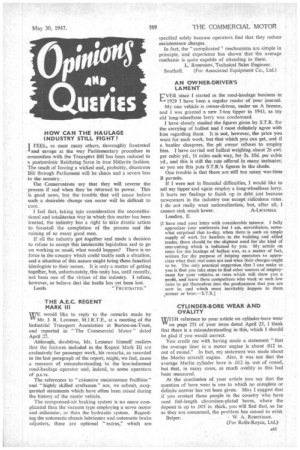CY LI N DE R-B ORE WEAR AND OVALITY WITH
Page 51

If you've noticed an error in this article please click here to report it so we can fix it.
reference to your article on cylinder-bore wear " on page 251 of your issue dated April 25, I think that there is a misunderstanding in this, which I should be glad if you would correct.
You credit me with having made a statement "that the average liner in a motor engine is about .012 in. out of round." In fact, my statement was made about the Merlin aircraft engine. Also, it was not that the average Merlin cylinder bore is .012 in. out of round, but that, in many cases, as much ovality as this had been measured.
At the conclusion of your article you say that the question of bore wear is one to which no complete or definite answer has yet been given. May I suggest that if you contact those people in the country who have used full-length chromium-plated bores, where the deposit is up to .005 in. thick, you will find that, so far as they are concerned, the problem has ceased to exist.
Belper. W. A. ROBOTHAM.
(For Rolls-Royce, Ltd.)












































































